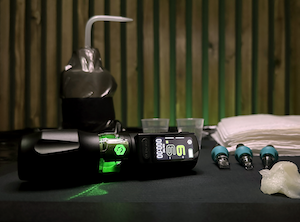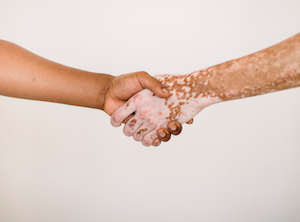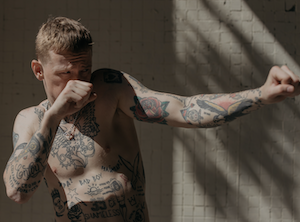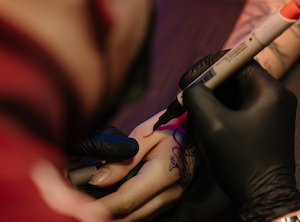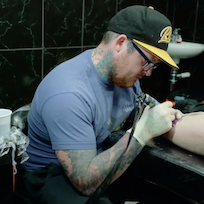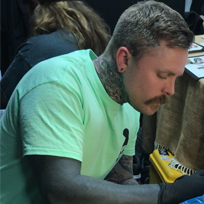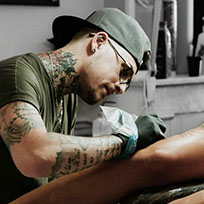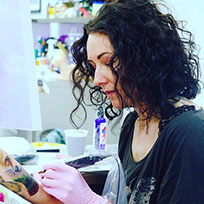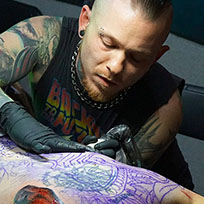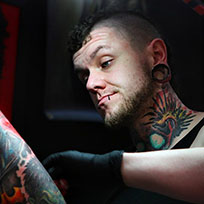Most customers who get their first tattoo ask themselves: How painful is a tattoo? Getting tattooed causes pain, no question. However, some people are much more tolerant of pain than others and can endure it for longer. Anticipation also plays a big role.
If, however, the fear of pain is so high that the customer panics and the appointment is therefore on the verge of falling apart, action must be taken. The fear is mostly unfounded, and the pain is usually less than the customer expects, so we’ve put together a few tips on how you can help to take some of the fear away from your customer in advance, making the tattoo session as pleasant as possible.
How to reduce tattoo pain
You cannot take away pain from your customer, but you can help your client prepare and accept it. Tattoos involve a lot of passion from the tattoo artist, but also a little suffering from the customer. But every piece of art under someone’s skin should be worth it.
Create trust
In order to take away some of your customer’s fear right from the start, it’s important to build trust early on. You can achieve this if your studio, or the studio you work in, is nicely furnished and clean. The customer should feel comfortable when entering the studio and confident to get tattooed by a professional.
You don’t want your studio to look like an operating theatre, but neither should it look like a pub. A good mix between hygienically clean, comfortable and individuality is the way to go. If you have awards from conventions or certificates, you can put them on the walls, so your customer sees that you have experience and have been awarded for your work.
Prepare your customer for the session
Direct contact with your customer also helps. Your customer should feel like they are in safe hands so the consultation and personal contact should be friendly and professional. It’s best to give your customer some tips a few days before tattooing; tell your customer what they should think about before (no alcohol the day before, enough sleep, to have breakfast, etc.) and what to bring with them (comfortable clothes, possibly a pillow, electric blanket, something to drink/eat, headphones, etc.).
You should also tell your customers how long you expect the session will last so that they can plan enough time and have a rough idea of the process. If your customer is afraid of needles or asks how much the tattoo will hurt, you should answer them honestly; that they will feel pain, but it is less than something like that of a medical injection.
Usually the expected pain is worse than the actual pain felt during the session. With this knowledge and your tips, the customer can prepare well for their upcoming tattoo appointment and develop the right mindset for the session.
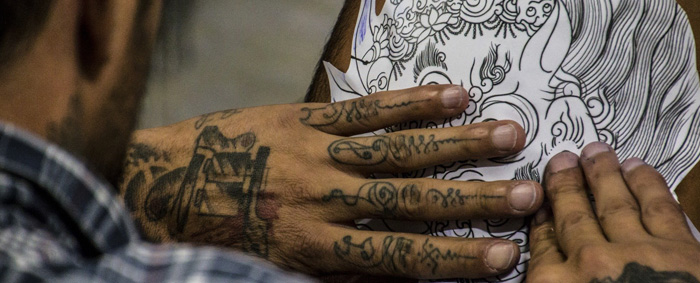
Allow your customer to be as comfortable as possible
Your customer should be able to make them self as comfortable as possible for you. Especially during longer sessions, it’s important that your customer lies or sits comfortably so that the pain from an uncomfortable position doesn’t add to the actual tattoo pain. A comfortable and ergonomically shaped tattoo chair or a tattoo bed can help a lot.
A relaxed atmosphere in the studio plays a big role as well. If your customer wants to distract them self during the session by watching a movie on their tablet or listening to their own music/audio books on headphones, you should allow your customer to do so.
Be focussed but responsible
Some people complain more than others. But anyone can grit their teeth. If your customer is very sensitive to pain, you should address this as little as possible. Of course, a tattoo is painful, which is why it is normal for your customer to feel pain. However, it doesn’t help if both of you talk about how painful it is constantly.
If your customer is moaning, it’s best to try to distract them or just look over it – of course only when the customer is otherwise doing well (no dizziness, nausea, paleness, etc.). If you have the feeling that there may be a risk to the health of your customer, you should pause the session until your customer feels comfortable again. Calm your customer and only continue when you can work risk-free.
Think of the session as a collaborative effort
A tattoo session is always a collaborative effort between the tattoo artist and the client. The tattoo artist must concentrate fully to do their best work and the client has to control their pain – and keep their body as still as possible. If your customer moves too much due to pain and this makes your work difficult, you should explain this to your customer.
If you are tattooing on a critical area or part, it is best to point this out to your customer, so they can put extra care into not moving. It often helps the customer to tell them to breathe calmly and concentrate. If your customer moves and twitches too much, you can tell them when you start tattooing and pause so that they keep still during this time.
If your customer is sensitive of pain, you can consider tattooing in several, shorter sessions. Usually the pain is easier to cope with for a short time than in long sessions.
How long does a tattoo hurt?
How long a tattoo hurts is always unique to each individual. In general, the most pain is felt during tattooing. Once you are done and the customer can admire the tattoo in all its glory, the pain is usually forgotten.
The tattoo will burn a little bit, but it will only really hurt if you wipe or touch it.
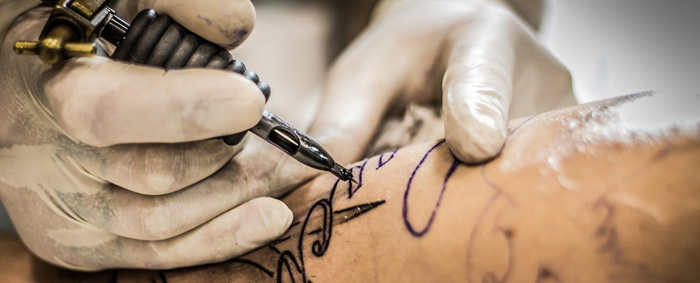
Which area hurts the least when you get a tattoo?
The choice of the body part to be tattooed plays a major role in the perception of pain. Everyone has other parts that are sensitive. In general, it can be said that areas where there are fewer nerve endings and there is cushion between skin and bones are the least painful. The upper arm is a good example for this.
On the other hand, many feel the most pain in the nipples, sternum and ribs, since there is hardly any cushioning between the skin and the bones with multiple nerve endings there too.
How much does it hurt to get a tattoo?
This question is easy to answer: As if many, very thin needles are penetrating your skin a few millimetres deep at very high speed. The pain is comparable to a slight abrasion or a deep scratch on the skin and is definitely less painful than getting a medical injection, as previously mentioned.
This is because the needles penetrate the skin less deeply. However, getting a tattoo takes much longer than a single injection. Fortunately, this also means that the body releases hormones and neurotransmitters, which in many cases make the pain much more bearable. Tattoo novices can be told that a tattoo, in most cases, hurts much less than they expect.
We hope these tips on taking fear and pain away from your customer have helped you. If you have a particularly anxious customer though, you could always advise them to read our Ultimate Guide to Getting Your First Tattoo.













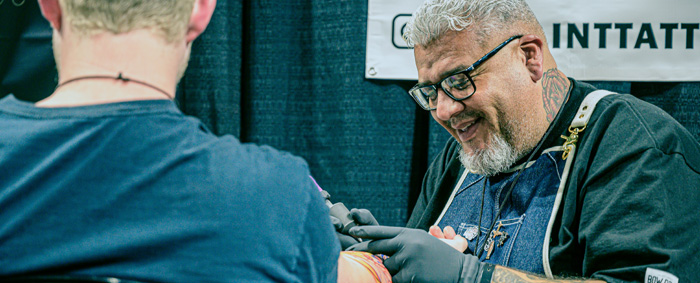
 What Is A Prince Albert Piercing?
What Is A Prince Albert Piercing?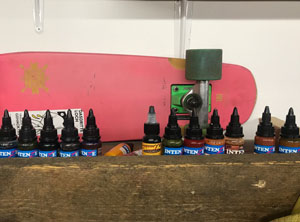 The Best Tattoo Ink 2024
The Best Tattoo Ink 2024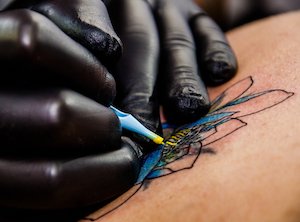 Tattooing Over Stretch Marks, Moles, Scars And Other Skin Conditions
Tattooing Over Stretch Marks, Moles, Scars And Other Skin Conditions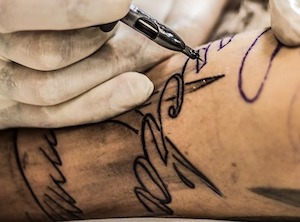 11 Best Fonts For Tattoos 2022
11 Best Fonts For Tattoos 2022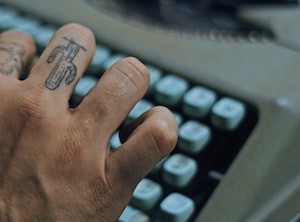 Advice For An Itchy Tattoo
Advice For An Itchy Tattoo
